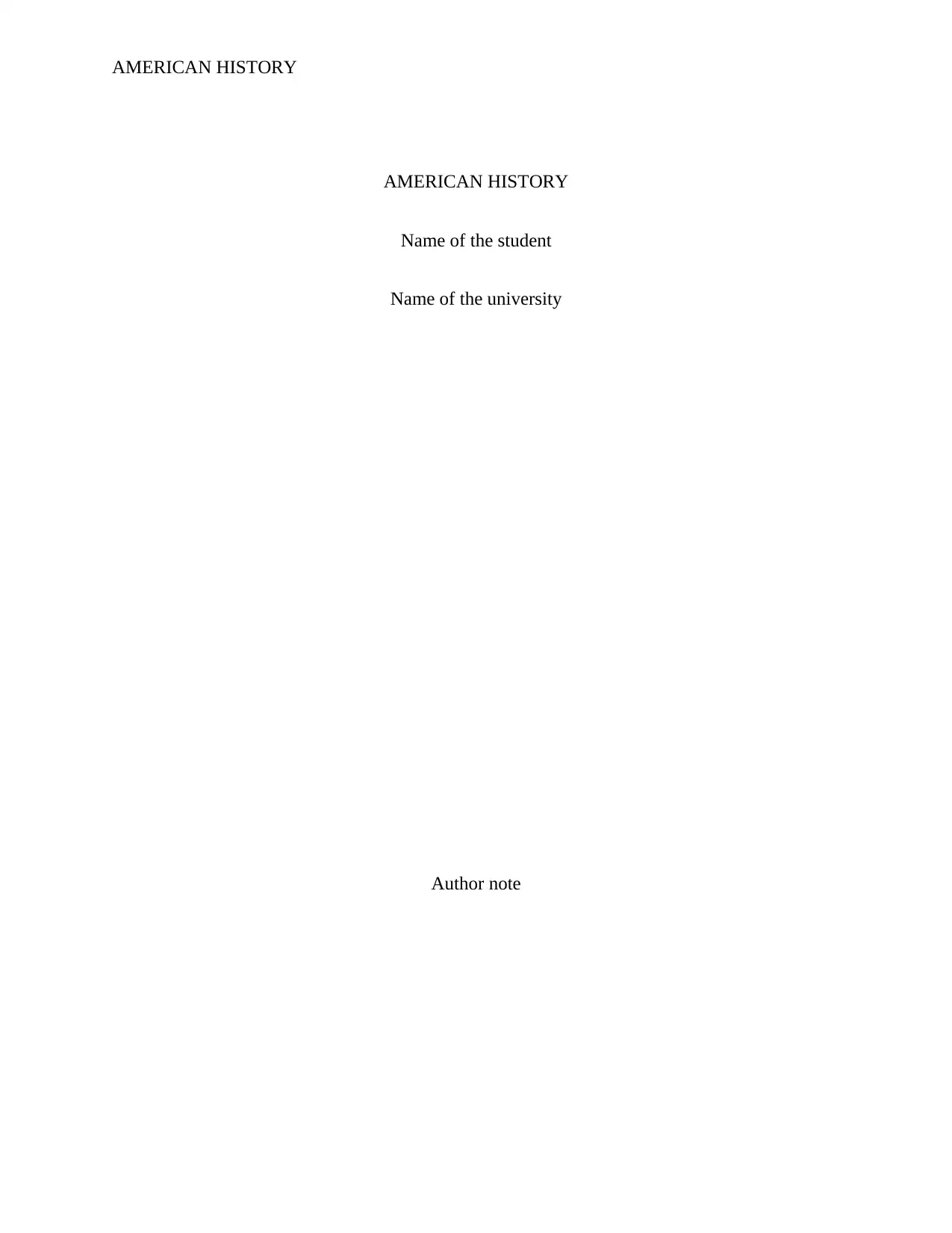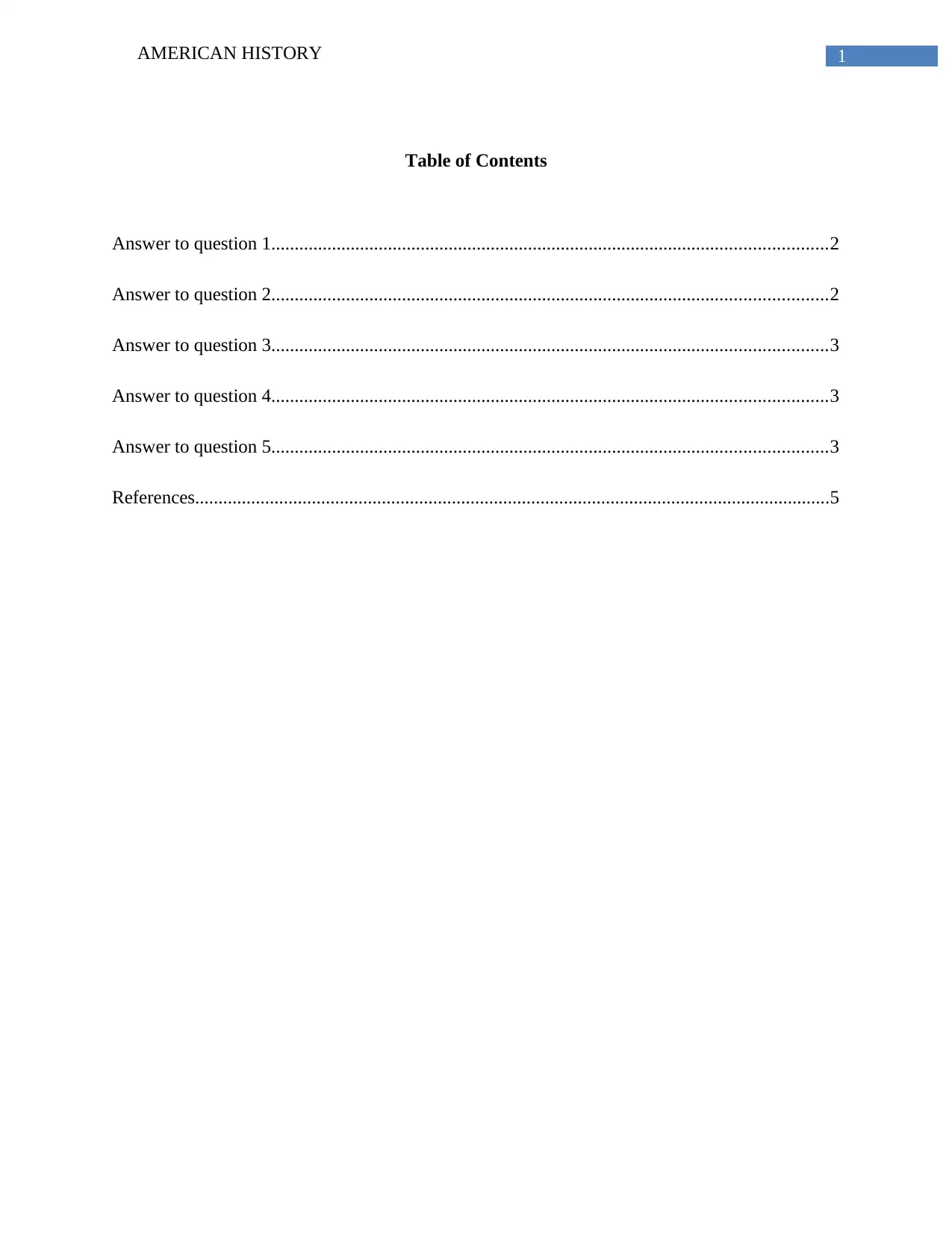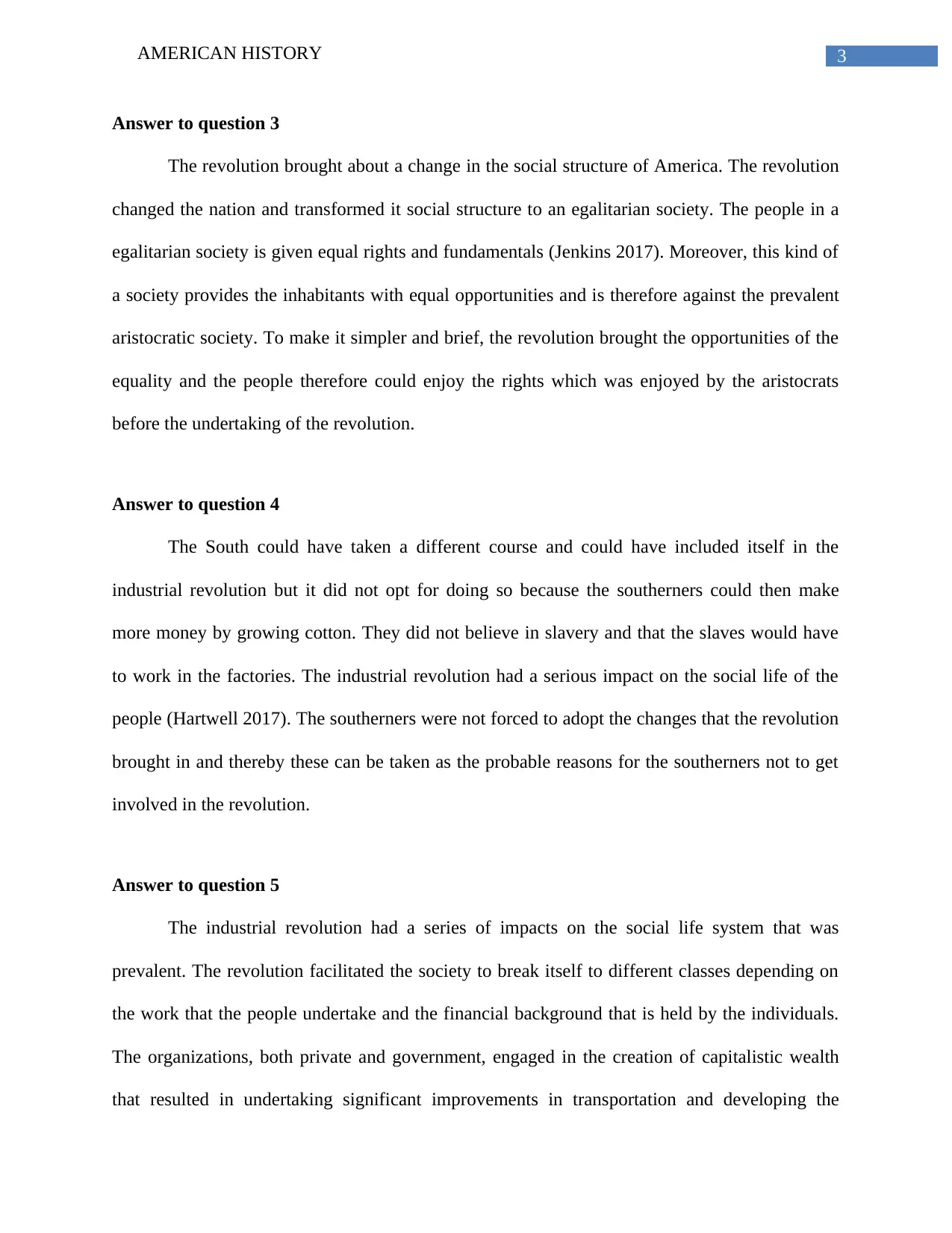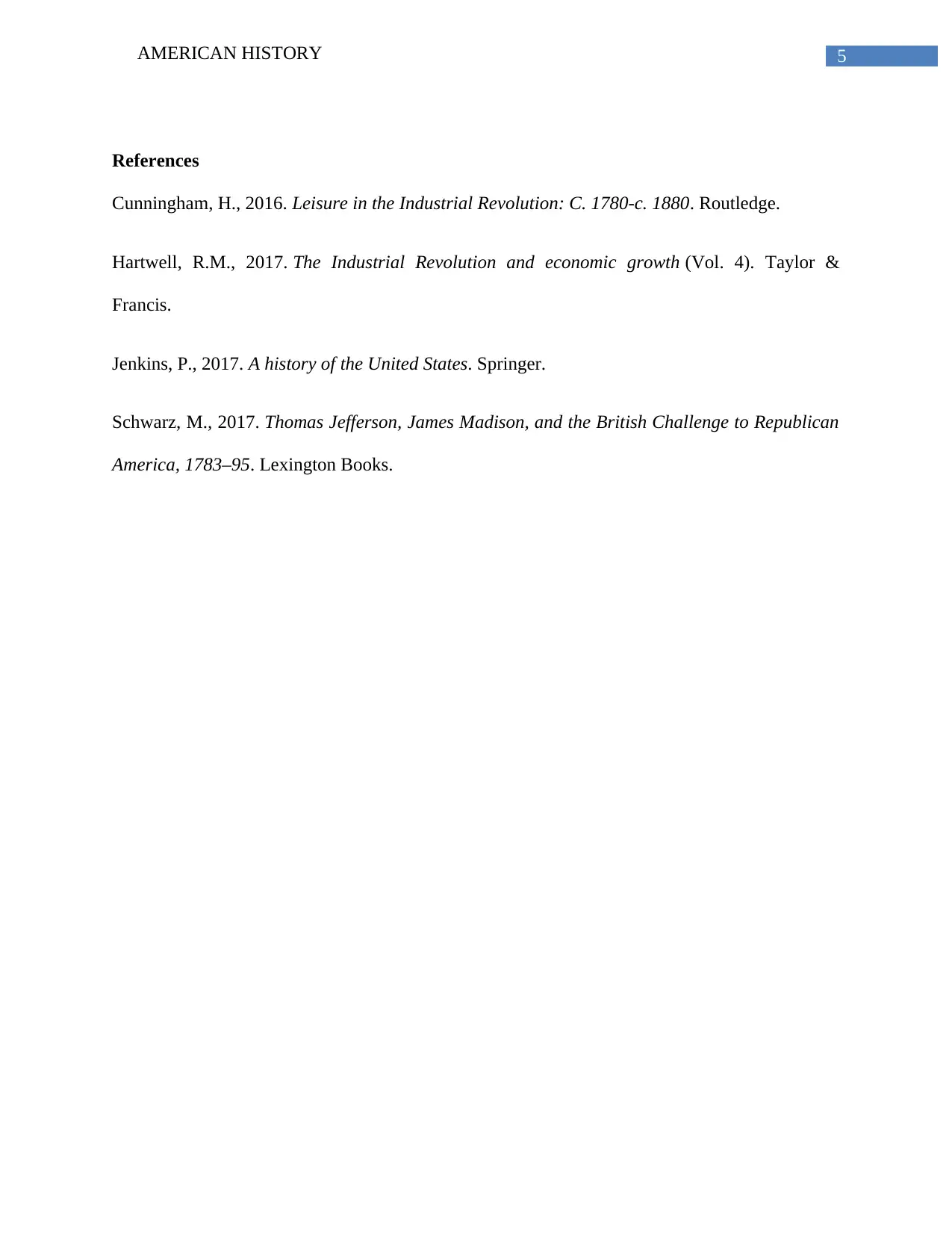American History Assignment - Analyzing Key Events and Social Impacts
VerifiedAdded on 2020/05/11
|6
|770
|90
Homework Assignment
AI Summary
This American History assignment provides detailed answers to five key questions. The first question examines the impact of Hamilton's policies, including the establishment of a national bank, and the opposing views of Jefferson and Madison. The second question focuses on the causes and outcomes of the War of 1812, analyzing the grievances that led to the conflict and the uncertainty surrounding its success. The third question explores the social transformations brought about by the American Revolution, particularly the shift towards an egalitarian society. The fourth question discusses why the South did not participate in the Industrial Revolution, citing economic incentives and social structures. Finally, the fifth question analyzes the Industrial Revolution's impact on social classes and economic development, including the expansion of cotton production facilitated by the exclusion of Native Americans. The assignment is well-researched and supported by relevant references.
1 out of 6













![[object Object]](/_next/static/media/star-bottom.7253800d.svg)